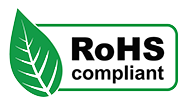The Significance of Flame Retardants in Medical Nonwoven Fabrics
- Postdate: 2023-08-24
- From: qibochem.com
-
The Significance of Flame Retardants in Medical Nonwoven Fabrics
- Postdate: 2023-08-24
- Form: qibochem.com
-
Introduction:
In recent years, the integration of advanced materials and technologies in the medical field has played a pivotal role in enhancing patient care and safety. One such innovation is the utilization of flame retardants in medical nonwoven fabrics. These fabrics serve as critical components in various medical applications, from surgical gowns and drapes to wound dressings and disposable bedding materials. The incorporation of flame retardants into these fabrics holds immense importance in ensuring not only the safety of medical personnel and patients but also the prevention of potential fire-related hazards in healthcare settings.
Ensuring Patient and Personnel Safety:
Medical nonwoven fabrics are designed to provide a barrier against infectious agents, fluids, and contaminants. However, the potential risk of ignition and rapid spread of flames cannot be overlooked, especially in environments where flammable substances are commonly present, such as alcohol-based disinfectants and oxygen-rich atmospheres. By treating these fabrics with flame retardants, an additional layer of safety is introduced. In the event of a fire, these treated fabrics are less likely to ignite and will burn at a slower rate, buying precious time for evacuation or firefighting measures. This becomes particularly crucial in settings like operating rooms and intensive care units, where patients might be immobile or highly vulnerable.

Preventing Fire-Related Hazards:
Hospitals and healthcare facilities house an array of electronic equipment and devices, making the risk of electrical fires a concern. Furthermore, the extensive use of medical gases and flammable liquids heightens the potential for fire-related accidents. When medical nonwoven fabrics are incorporated into the design of items such as bedding, drapes, and upholstery, the addition of flame retardants greatly reduces the chances of fire propagation. This preventative measure can significantly decrease property damage, mitigate injuries, and even save lives.
Compliance with Stringent Regulations:
The medical field is governed by strict regulations and standards to ensure the highest level of patient safety and care. As such, medical nonwoven fabrics must adhere to rigorous guidelines set by regulatory bodies. Many of these guidelines now encompass the requirement for flame retardant properties in certain medical textiles. Manufacturers and healthcare institutions alike are obligated to uphold these standards, reinforcing the imperative nature of integrating flame retardants into medical fabrics.
Conclusion:
The incorporation of flame retardants in medical nonwoven fabrics is an essential aspect of modern healthcare. By enhancing the fire resistance of materials used in critical applications, such as surgical gowns, drapes, and bedding, the safety of patients, medical personnel, and valuable medical equipment is significantly improved. The prevention of fire-related hazards and the adherence to strict regulatory standards further underscore the importance of this innovation. As technology continues to advance, the continuous improvement of flame retardant materials will undoubtedly contribute to a safer and more secure healthcare environment for all.
Shijiazhuang Qibo Technology Co., Ltd. specializes in the production of halogen-free, low-odor, antistatic, anti-aging, antibacterial, Anti-ultraviolet, flame retardant, hydrophobic, hydrophilic, non-slip,flame retardant masterbatch for transparent non-woven fabrics.

















